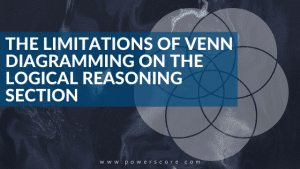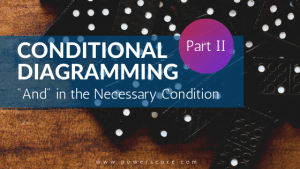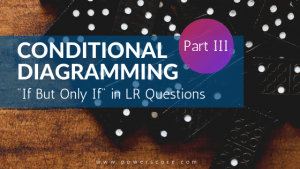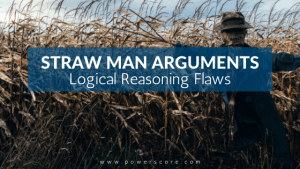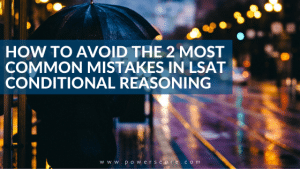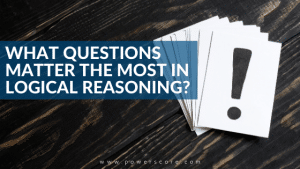Archer, an animated series on FX, is about a spy agency and its group of clever, often bitingly sarcastic secret agents, who provide some great examples of the same kinds of logical flaws that we see on the LSAT:Ad Hominem Argument This type of flawed logic, often called a “source argument” describes an attack directly on the speaker, or the source of the argument, rather than on the merits of the argument itself.A great example appears … [Read more...]
The Limitations of Venn Diagramming on the Logical Reasoning Section
This post is from the LSAT Free Help Area on our website. Want to get even more free LSAT help? Check it out! While preparing for the LSAT, students will undoubtedly encounter a wide variety of suggested test taking strategies. Unfortunately, one of the more commonly advocated approaches, particularly with regards to the Logical Reasoning sections, is the use of Venn diagrams1. Despite their popularity with certain test-preparation programs, … [Read more...]
How to Attack Flaw in the Reasoning Questions on the LSAT
Flaw in the Reasoning questions require you to identify the underlying logical flaw in the argument. Over time, Flaw questions have become among the most common question types on the Logical Reasoning section of the LSAT. In fact, they account for approximately 15% of all questions and 30% of all First Family questions. Your next test will likely contain as many Flaw questions as all Main Point, Method, Parallel, Parallel Flaw, and Cannot Be True … [Read more...]
Conditional Diagramming Part II: “And” in the Necessary Condition
In my last post, I discussed conditional statements with "or" in the sufficient condition. Diagrams with multiple necessary conditions can, depending on the circumstances, then be used to create multiple single diagrams. Let's look at an example.If the rule reads: "If Operations is offered, then Accounting or Sales is also offered," then the diagram is solely: A O → or S Because the necessary condition is just at least … [Read more...]
Conditional Diagramming Part I: “Or” in the Sufficient Condition
Diagrams with multiple sufficient conditions can, depending on the circumstances, then be used to create multiple single diagrams. Let's look at an example.Consider a rule that reads: "If Operations or Sales is offered, then Accounting is also offered." Operations = O Sales = S Accounting = A As a single conditional statement, there are two parts to the sufficient condition (O and S), that are joined by an "or" operator. That sufficient … [Read more...]
Conditional Diagramming Part III: “If But Only If” in LR Questions
An interesting topic came up on our forum a short time back, about the meaning of “If but only if,” and the proper way to diagram a rule that includes this phrase. Students who are familiar with the LSAT have probably encountered a rule that says “if and only if,” but the use of the term “but” is a clever trick by the test makers. “If but only if” doesn’t look quite the same as “If and only if,” and to many students, the two phrases appear to … [Read more...]
Straw Man Arguments: Logical Reasoning Flaws
Of all the logical flaws you might encounter on test day, a "straw man" argument not only has the most interesting name (and "straw man" is actually the proper name used in logic for this flaw), it also provides some of the most entertaining examples. In the context of an LSAT question, however, the usage is fairly predictable.Typically, you'll see a stimulus with two speakers. The second speaker will reframe the first speaker's argument in a … [Read more...]
How to Avoid the 2 Most Common Mistakes in LSAT Conditional Reasoning
A student of ours who's working through the PowerScore Logical Reasoning Bible asked a common question the other day, and I want to share it, and my response, with you. Specifically she's been struggling with Mistaken Negations and Mistaken Reversals in conditional reasoning, and asked if I could help her better understand those two errors. Here's my reply: Common Roadblock Conditional reasoning is a tricky concept for a lot of people, so don’t … [Read more...]
What Questions Matter the Most in Logical Reasoning?
In every LSAT class I teach, sooner or later the same inquiry pops up: "What’s the most important type of question in Logical Reasoning?" Students asking this question often remind me of an ER nurse, triaging patients based on the seriousness of their condition. Hopefully, you won’t find yourself in this predicament, having to triage your study of Logical Reasoning. But if you must, here’s some advice:While it is difficult to say which … [Read more...]
The Rise and Fall of Double-Question LSAT Logical Reasoning Stimuli
I've talked before (notably here and here) about how the content of LSATs changes from test to test. But, there are even changes in the type of question forms you see. For example, in the early 1990s, Justify the Conclusion questions were rather rare, whereas in the 2000s they appeared relatively frequently. In Logic Games, Rule Substitution questions did not start appearing until June 2009. In Logical Reasoning, one question format that used to … [Read more...]


